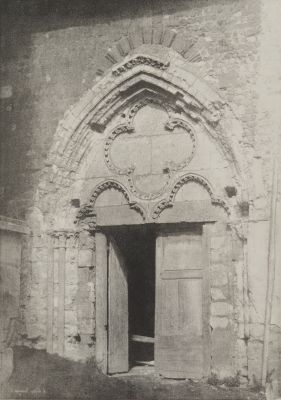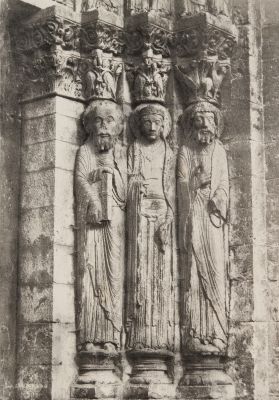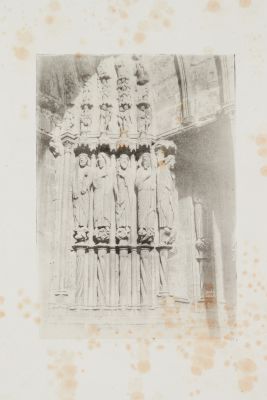
Title
The PanthéonArtist
UnknownPublication
Essais de Lithophotographie. Impression obtenue directement sur pierre par la Photographie.Date
1852Process
LithophotographieAtelier
Lemercier, Lerebours, Barreswil et DavanneImage Size
21.5 x 16 cmSheet Size
36 x 27.5 cm
“These tests mark the Earliest known experiments in photolithography – an important original photomechanical process, whose developments paved the way to the dissemination of photography in print.” [1]
As early as 1848 Lemercier began experimenting with technology that could possibly unite photography and lithography. Consulting with the optician Noël Paymal Lerebours and chemists Charles-Louis Barreswil and Louis-Alphonse Davanne, Lemercier was the first to attempt to transform the fugitive paper-based photograph into a permanent ink-based photolithographic print. He named his process Lithophotographie.
By mid-1852 the team had succeeded in executing experimental trial proofs which he labled Essais de Lithophotographie; Impression Obtenue directement sur Pierre par la Photographie and, on June 28, delivered them along with an explanation of the process to the Académie des Sciences seeking a patent. On August 16, François Arago presented the work and the patent was granted.
Two years later, Lemercier went further and published a set of six halftone prints under the title Lithophotographie: Ou Impressions Obtenues Sur Pierre À L’aide De La Photographie. A full set of these prints was given to the Paris Academy of Sciences (9 January, 1854) as further proof that practical photo-lithography had been achieved. However, the success of their method was limited. Lemercier soon abandoned it because only a few copies could be reliably made and after 1860 he adopted Alphonse Poitevin’s process in preference to the method he and his associates had patented. [2]
Stamped with, "Breveté S. G. D. G". Breveté SGDG was a French type of patent that ceased to exist in 1968. The name was a common abbreviation for "Breveté Sans Garantie Du Gouvernement“ (patent without government guarantees).
Reproduced / Exhibited
Getty Object Number: 84.XP.779.5
References
[1] La Photographie II Collection Marie-Thérese et André Jammes Paris 21 March 2002 p. 54
[2] Jeff Rosen (1987) The Printed Photograph and the Logic of Progress in Nineteenth-Century France, Art Journal, 46:4, 305-311, DOI: 10.1080/00043249.1987.10792378








![[Stone Ruins] Lithophotographie test](https://res.cloudinary.com/markkatzman/image/upload/c_scale,h_400/v1/master/Lemercier_14.jpg)